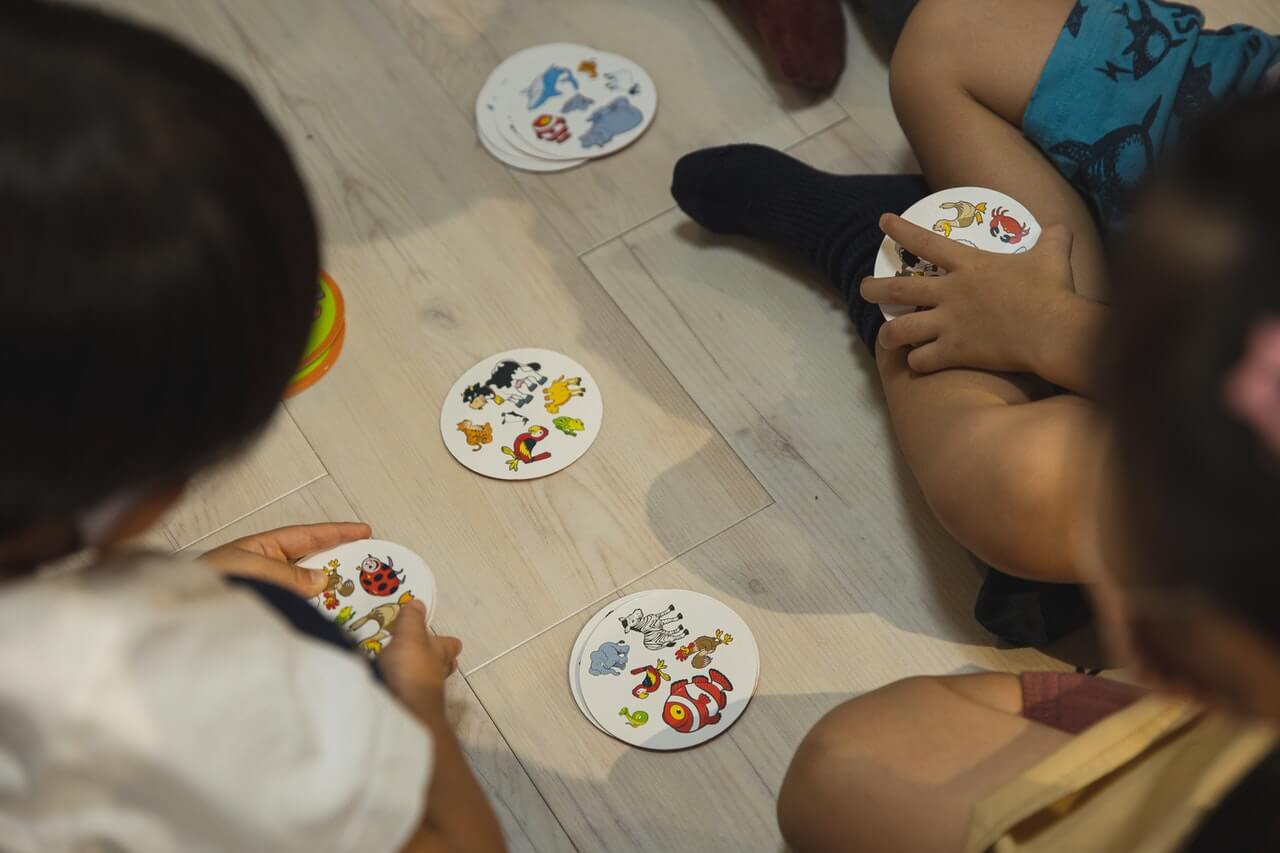Students get a bit stressed with reading and listening activities. I don’t blame them. It’s hard.
I imagine it’s incredibly frustrating to be forced to read something or listen when you don’t understand a majority of the words.
Luckily, there are a few tricks to make these aspects of English classless painful for everyone involved.
These 5 ESL games are perfect for teaching listening and reading skills in a fun and effective way.
-OnTESOL: Accredited TESOL Certificate Courses–
1- What’s the Question?
This is a super simple ESL game that focuses on listening, reading comprehension, speaking skills.
In many ESL settings, teachers focus very heavily on training their students to answer questions. While this is useful, questions and answers form a symbiotic relationship.
This game forces students to think backward and work out the grammar for themselves, using hints from the answer, of course.
It can be tailored to all levels.
Read: Teaching Grammar with Concept Questions
“What’s the Question?” can be played game-show style, either in teams or with every student representing themselves-although teams often encourage more participation from students since they are constantly engaged (as opposed to waiting ages for their turn).
Provide students with a few examples of how the ESL game will go before you start. Give answers focusing on a story that you’ve all read together, a sign, or an audio recording, and then state the appropriate question that goes with this answer.
The teacher can act as the host, while a representative of each team can come to the front, standing side-by-side and waiting to “buzz in” to answer.
The faster player to respond earns a point for his/her team. Each student should get multiple turns.
3- What’s the Lyric?
Who doesn’t love listening to music? TV and music are one of the universal elements that are often recognizable cross-culturally.
However, I don’t pretend to know or even be able to detect every word to my favorite songs, so how could I expect students learning a new language to do so? I’ve only used “What’s the Lyric?” with very young learners- I’m talking pre- K, Kindergarten, and first grade. At those ages, the students still get excited by singing simple songs and nursery rhymes.
In my pre-K and Kindy classes, we’d always have a ‘song of the week’. We’d practice listening and singing along for the first few days, then at the end, I’d put their listening skills to the test.
As the song plays along, stop it randomly and have the students sing the line that comes next. I promise: they’ll love it!
Read: Using Songs with Adult Learners
Some textbooks come with a multimedia program that includes a song that goes along with that week’s grammar and vocabulary themes, which will make your job a whole lot easier.
If you don’t have that resource, hit up Youtube and search for slow versions of simple songs, like the one below. I used this exact link to teach my three-year-old students in Turkey to identify weather.
After the first week, they no longer needed the video and could identify the weather outside by singing this song to me each morning. It was great!
4- Make a Board Game
I recently found a cool idea aimed at making reading comprehension discussions more fun and interactive.
While adults will typically be mature enough to engage in a simple question and answer session, kids get bored easily- and who could blame them? To combat this, create a board game for a post-reading game.
You can make this on the floor for young students to hop along on or write one on your whiteboard. Plus, you’ll need dice. Have different squares along the path represent different questions, themes, and discussion points relative to the reading.
For example, one square could simply say a new vocabulary word/definition that was introduced in the reading, and the students could be asked to explain how it was used, etc.
Another square could ask a direct comprehension question (i.e. “Who stole the cookies from the jar in the story?” Or “Where do panthers live? , while another could present the student with the question, “Who was your favorite character and why?”.
If your students are capable, have the last square ask the students to propose a different ending to the story!
Read: Top-Down Processes For Teaching Reading Skills
5- Find It
If you don’t use textbooks and aren’t given reading materials from your boss, take the opportunity to get thrifty with old magazines and newspapers.
On the board, write a list of things that you’d like your students to find by sifting through the written word and reading the right articles.
For example, you could distribute the travel section of the newspaper and have the students identify one budget location, one piece of information about an airline, one outdoor adventure scheme, and so on.
You could also write completely random things that require the students to go through the entire paper, such as: find the results of a sporting event, summarize an advertisement, find something about a political figure or other celebrity, detail an event that just happened abroad, tell me about the weather forecast for x, etc.
This is a great way to put a reading study into practical use.
Read: Supplementing the Textbook with Authentic Material
Pre-Reading Discussions
The pre-read is almost as important as the actual reading process itself. For younger learners, ask them to look through the pictures in order to predict elements of the story.
What characters might be present? What do they think might happen? Is it a happy story? Having a discussion like this is a great way to prepare them for the story and get them in the right mindset for reading.
With older students, you can ask similar questions if pictures are present with a story or article. Otherwise, I usually have them do a pre-read skim to identify any words that they might deem challenging.
Clear these up as best as you can, or encourage them to figure it out together using context clues once they begin reading the article properly.





